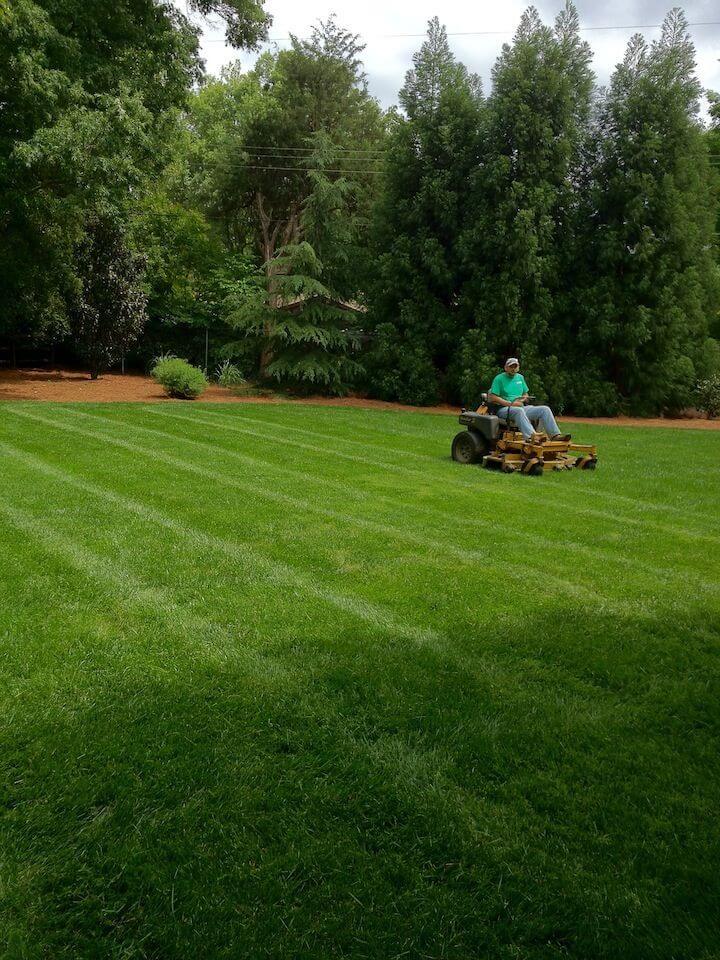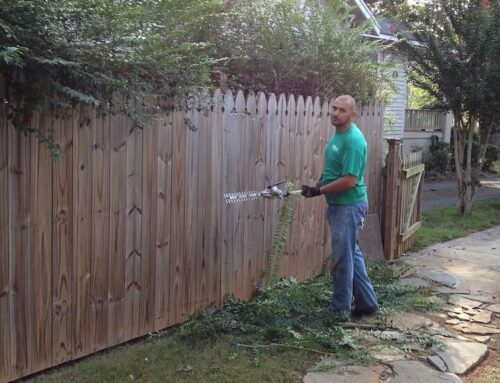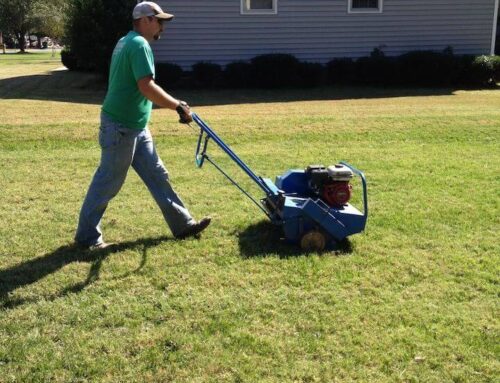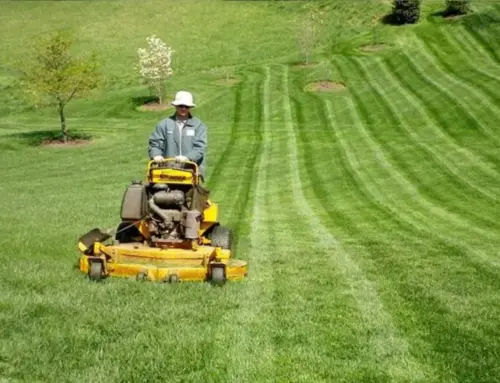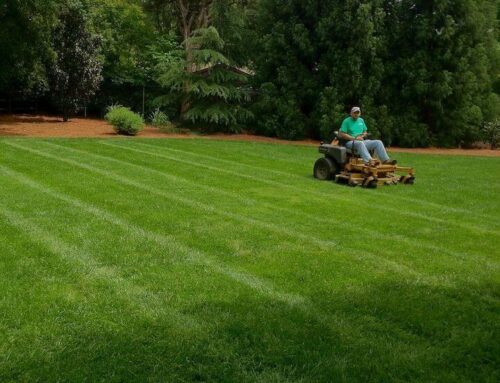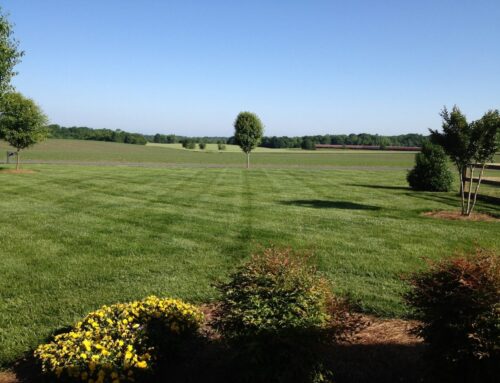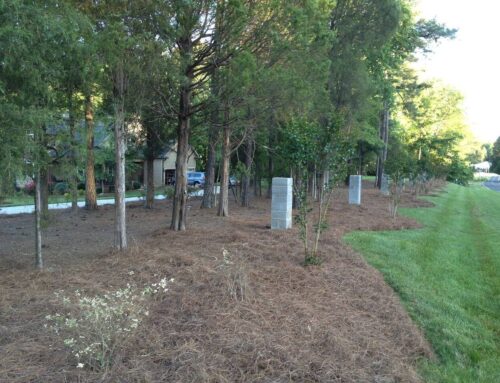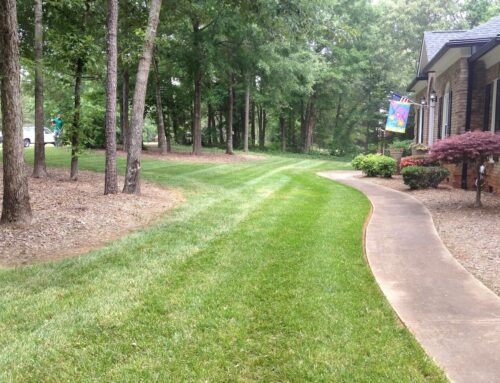Dealing with standing water can be a significant challenge for property owners, often leading to issues like soil erosion, damage to landscaping, and potential health hazards. Professional landscapers offer several effective solutions to address this problem. One common approach is installing proper drainage systems, such as French or surface drains, which redirect excess water away from problem areas. Additionally, landscapers may recommend grading adjustments to ensure water flows away from foundations and other critical areas. By optimizing the land’s slope and drainage, they can effectively manage water runoff and prevent pooling.
Professional landscapers also improve soil drainage using soil additives or porous surfaces. Organic matter or permeable pavers can improve soil water absorption, lowering standing water. They may also recommend stormwater-capture rain gardens or bioswales. These landscaping elements improve water drainage and property aesthetics. These technologies assist professional landscapers in managing standing water and preserving a functional and appealing outdoor space.
What are the common causes of standing water in residential landscapes?
Common causes of standing water in residential landscapes include:
- Poor Drainage Systems: Inadequate or improperly installed drainage systems can lead to water accumulation. This includes issues with gutters, downspouts, and drainpipes that fail to redirect water effectively away from the property.
- Flat or Low-Lying Areas: Areas with minimal slope or low-lying yard sections are prone to water pooling. With a proper grade, water has somewhere to go and tends to collect in these low spots.
- Soil Compaction: Compacted soil reduces the ground’s ability to absorb water, leading to surface runoff and standing water. This is often an issue in high-traffic areas or where heavy machinery has been used.
- Improper Grading: Incorrect landscape grading can cause water to flow towards certain areas instead of away from them. This problem often arises from poor landscaping design or erosion.
- Inadequate Landscaping Features: Lack of or poorly designed landscaping features like swales, rain gardens, or berms can contribute to water accumulation. These features help manage and direct water flow effectively.
- Heavy Rainfall or Storms: Excessive rainfall or storms can overwhelm drainage systems and soil absorption capacity, leading to temporary standing water. Prolonged or intense rainfall events can exacerbate existing drainage issues.
- Blocked Drains: Clogged or blocked drains, including storm drains or drainage channels, can prevent proper water flow and lead to localized flooding.
- Water Runoff from Impervious Surfaces: Hardscapes such as driveways, patios, or sidewalks can redirect water into landscape areas if not properly designed with drainage solutions.
Addressing these causes often involves improving drainage systems, adjusting landscaping features, and effectively managing water flow.
How do professional landscapers address drainage issues that lead to standing water?
Professional landscapers address drainage issues leading to standing water through a variety of effective strategies:
- Installing Drainage Systems: Landscapers redirect water from troublesome areas with French drains, surface drains, and catch basins. French drains use perforated pipes in gravel-filled pits to collect and dispose of water. Catch basins and surface drains carry water from lowlands to drainage networks.
- Grading and Regrading: Adjusting landscape grading is essential for drainage. Landscapers slope the land to keep water away from foundations, lawns, and other important locations. Soil is often added or removed to achieve the desired grade.
- Soil Improvement: Another frequent method is improving soil drainage. Landscapers can add compost to soil to increase structure and water absorption. In heavy clay soils, sand or other elements promote permeability and prevent water pooling.
- Porous Surfaces: Porous concrete, gravel, and pavers lessen runoff by allowing water to enter the surface. This method works well for roads, pathways, and patios where standard hardscaping may cause drainage concerns.
- Creating Rain Gardens and Bioswales: Landscapers create bioswales and rain gardens to regulate stormwater. Native flora in these manicured depressions absorbs and filter water, decreasing runoff and standing water.
- Improving Existing Drainage Features: It is crucial to repair or upgrade gutters, downspouts, and drainage pipes. Landscapers keep these components working to prevent water from accumulating.
- Installing Dry Wells: Dry wells are underground structures that collect and temporarily store excess water before gradually allowing it to infiltrate the surrounding soil. This helps manage water runoff and reduce standing water in landscaped areas.
By implementing these strategies, professional landscapers effectively manage water flow, mitigate standing water issues, and enhance residential landscapes’ overall health and functionality.
What types of solutions do landscapers implement to prevent standing water accumulation?
Landscapers implement several solutions to prevent standing water accumulation, addressing both the source of the water and the landscape’s ability to manage it:
- Proper Grading: Adjusting the landscape slope protects water from structures, foundations, and lowlands. Grading sends water away from nuisance areas and toward drainage systems.
- Drainage Systems: Installing French drains, surface drains, and catch basins helps collect and redirect excess water away from areas prone to standing water—these systems channel water through pipes or channels to designated discharge points.
- Permeable Surfaces: Permeable materials for hardscaping, such as permeable pavers, gravel, or porous asphalt, allow water to infiltrate through the surface rather than run off. This reduces the amount of surface water and helps manage runoff.
- Rain Gardens and Bioswales: Installing rain gardens and bioswales requires landscaping depressions with native plants that collect and filter rainwater. These features capture and reduce stormwater runoff.
- Soil Amendments: Improving soil structure by adding organic matter, such as compost or sand, enhances its ability to absorb and drain water. This prevents water from pooling on the surface and promotes better infiltration.
- Dry Wells: Installing dry wells helps manage excess water by capturing and temporarily storing it underground. The water then slowly infiltrates the surrounding soil, reducing surface runoff and standing water.
- Gutter and Downspout Maintenance: Properly installed and maintained gutters and downspouts help prevent water from overflowing and accumulating around the foundation. Extensions or splash blocks can direct water further away from the property.
- Gravel or Rock Drainage Channels: Gravel or rock-filled channels can help direct water flow and prevent pooling. These channels act as natural pathways for water to travel away from sensitive areas.
- Planting Strategic Vegetation: Planting trees, shrubs, and ground covers with deep root systems can help absorb excess water and improve soil drainage. Vegetation can also stabilize soil and prevent erosion.
By integrating these solutions, landscapers effectively manage water flow, reduce standing water, and enhance the functionality and aesthetics of residential landscapes.
How can professional landscaping services improve the overall drainage of a property?
Professional landscaping services can significantly improve the overall drainage of a property through several key approaches:
- Custom Grading and Regrading: Landscapers slope the land to keep water away from buildings, driveways, and other important areas. Good grading sends runoff to drainage systems and away from water-prone areas.
- Advanced Drainage Systems: Installing French drains, surface drains, and catch basins helps collect and redirect excess water. These systems efficiently channel water to designated areas, preventing pooling and reducing water damage.
- Permeable Hardscaping: Using permeable materials for driveways, walkways, and patios allows water to pass through the surface and infiltrate into the ground. This reduces surface runoff and helps manage water flow more effectively.
- Rain Gardens and Bioswales: Landscaped depressions like rain gardens and bioswales catch and control stormwater runoff. Native plants absorb and filter water, reducing runoff and increasing drainage.
- Soil Improvement: Enhancing soil drainage by adding organic matter or sand improves water absorption and reduces surface pooling. Landscapers can amend the soil to increase its permeability and overall drainage capacity.
- Dry Wells and Infiltration Systems: Installing dry wells or infiltration systems helps capture and temporarily store excess water, allowing it to infiltrate the surrounding soil slowly. This reduces surface runoff and standing water.
- Maintenance of Gutters and Downspouts: Professionally installed and maintained gutters and downspouts divert water away from the property. Water can be diverted from foundations with extension pipes or splash barriers.
- Strategic Vegetation: Planting trees, shrubs, and ground covers with deep root systems can help absorb excess water and stabilize soil. Vegetation also helps prevent erosion and enhances the landscape’s ability to manage water.
By implementing these strategies, professional landscaping services enhance the overall drainage of a property, mitigating issues related to standing water and improving the property’s functionality and aesthetics.
Resolve Standing Water with Expert Solutions!
At Performance Lawn & Landscape, we provide expert solutions to tackle standing water issues efficiently. Our team specializes in custom grading, advanced drainage systems, and permeable hardscaping to ensure effective water management across your property. We also design and install rain gardens and bioswales to capture and filter stormwater runoff, improving drainage and preventing future issues. Our expertise in soil improvement and strategic vegetation enhances your landscape’s ability to manage water and prevent pooling. Contact us today to schedule a consultation and discover how we can resolve your standing water problems professionally and precisely.

